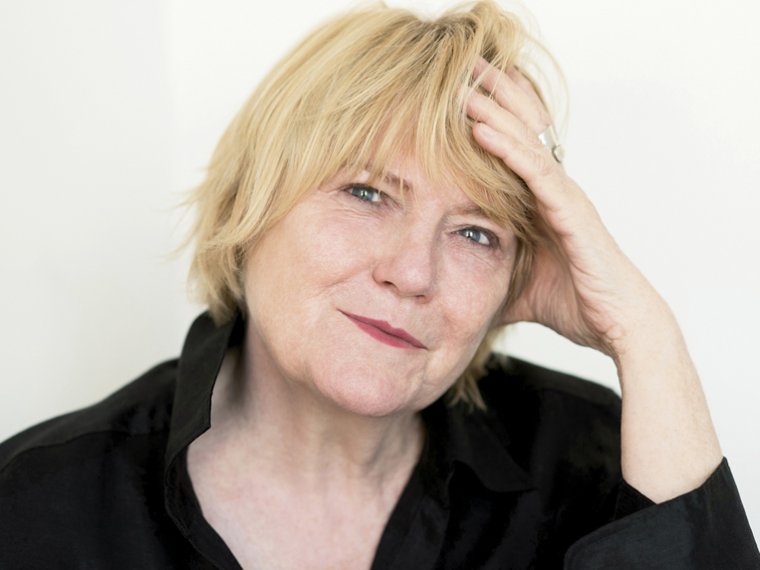During sexual assault or abuse, many victims experience dissociation, a coping mechanism of detachment or psychological escape from an unbearable, threatening reality. For survivors and nonsurvivors alike, a common response to reading about or otherwise being exposed to traumatic content is to similarly dissociate, to “go somewhere else” in their minds. (Some believe that trigger warnings can be a useful way to avoid this reaction, while others think that such disclaimers promote silencing and shelter people from a reality that is necessary to fully see and know in order to stop our societal tolerance for such violence.) A craft technique that can help combat the dissociative response is to ground readers in a specific time and place. When setting is at the forefront, the reader enters the space of the narrator’s experience. Placing oneself in a well-defined space can help a reader feel more stable and safer to proceed with the story. In her essay “2 Corinthians 65:14,” which she published in ENOUGH, a weekly series of #MeToo essays at the Rumpus, Sam Brighton focuses on the setting of a church hall and the facts of a sacred space—along with irony and dark humor for levity—leading up to a memory of sexual abuse:
For about sixteen hundred dollars, at the hall named after a child molester, a newlywed couple may boogie down with four hundred and ninety friends to celebrate their holy heterosexual matrimony. Specifically, the hall is for heterosexual couples. Even if we wanted to, my wife and I couldn’t rent the hall to gather our people—our families, our friends, the gender-benders with buzz cuts and wing-tips and wives—to slow-dance the night away to k. d. lang—even if otherwise we fulfilled the contract and followed the facility rules….
The hall charges a six-dollar corking fee, which makes me want to write jokes about when Jesus and his mom attended the Wedding at Cana and Jesus converted water into wine, did the venue charge Jesus a corking fee?…
From the pictures posted on the website, the dance floor is constructed from blond, narrow wood resembling a bowling lane. The walls are simple, decorated only with windows and fire extinguishers—no statues of crucified bodies to turn one’s appetite away from wedding cake. The windows are tall and the carpet inconspicuous. It’s a humble ambiance that someone like Jesus might enjoy—the austere social-justice Jesus, not the bejeweled and super-judgmental Jesus.
Where memories are made. My body, my sacred space, remembers the priest. An accidental touch, because sometimes my wife forgets, because the abuse isn’t just under the surface in every sexual encounter for her like it is for me. A borderline tickle in the wrong place converts pleasure into nausea.
Brighton connects the setting of the sacred space of the hall with the sacred space of her body. The double use of the word sacred accompanies the writer’s double use of convert: Jesus converted water into wine; pleasure converts into nausea. In this way the prose couples the setting with the experience of sexual abuse.
“The church hall, for me, converges two separate sources of longstanding painful issues—childhood sexual abuse and homophobia,” Brighton says about the piece and her use of setting to tell her story. “The hall gives a tangible quality to something that was once more theoretical or based in assumption. Without the hall, in my adult life, I could assume the church wouldn’t want me using their space to celebrate my same-sex marriage, and I could assume they don’t prioritize the interests or experiences of the sex abuse survivors harmed by their clergy people. And the hall is just a very disappointing confirmation that these ideas are true.”
Highlighting a concept from an outside source can also be a useful tool to educate, contextualize, and universalize a #MeToo-themed story for readers. In her essay for the ENOUGH series, “A Thousand Stories,” Megan Stielstra, author of The Wrong Way to Save Your Life (Harper Perennial, 2017), quotes an expert on fear, then follows with reflection:
I’d like to tell you that I spat in his face or kneed him in the balls or staked him through the heart, but I can’t. “At core, men are afraid women will laugh at them,” wrote Gavin de Becker in The Gift of Fear. “While at core, women are afraid men will kill them.” I hate admitting that. I hate knowing how fast and often these moments turn violent. I hate that afterwards I asked the bouncer to walk me to my car. I hate how I still don’t listen to that band. I hate the memories that show up uninvited every time I go out dancing, or park my car on a side street, or swim, or clean the floor, or walk into the stairwell at the college where I worked or the restaurant where I worked or the L or the street between the L and my apartment or the alley where I walk my dog every morning or any of a thousand places. There are a thousand stories. Here’s why I chose this one…
“The quote takes it out of the anecdotal and into the universal,” Stielstra says about crafting her essay. “That’s the challenge of writing the personal essay: moving from why does this matter to me to why does this matter?”

After finishing a #MeToo story, just as with any piece of writing one hopes to publish, paying attention to the submission guidelines and the publication style of prospective outlets is integral for success. Marisa Siegel, owner and editor in chief of the Rumpus, and creator of the ENOUGH series, shares her mission and vision for #MeToo writing. “The descriptive philosophy of the ENOUGH series states that rape culture, sexual assault, and domestic violence subject matter is timely as well as timeless,” she says. “We want to make sure that this conversation doesn’t stop—not until our laws and societal norms reflect change. We are looking to publish the strongest writing and to represent a diversity of voices around the issues of sexual harassment, assault, and abuse. We are also looking to feature a variety of styles and genres within the series.”
Just like writers and readers, working with #MeToo pieces can be challenging for editors. “Beyond logistics [of receiving hundreds of submissions a day], it takes an emotional toll to read these pieces,” Siegel says. “In reading these submissions I’ve also had to confront past experiences that perhaps I’d chosen not to label as assault or abuse and have come to realize that those experiences weren’t as okay as I’d let myself believe. This is a powerful but difficult consequence of editing this series.”
When one’s #MeToo story is declined, it’s hard not to feel discouraged. Elissa Washuta’s memoir, My Body Is a Book of Rules (Red Hen Press, 2014), was rejected by nearly forty editors. But she persisted and found a publisher who “understood my aims completely,” Washuta says, “and accepted the manuscript on the terms it set without wanting it to be anything but what it was.”
As with any piece of writing, once a work of #MeToo writing is published, the writer faces audience reaction, which has the potential to be both rewarding and challenging. For some writers, having such personal stories in the world may cause a great deal of anxiety. It’s important for writers to have a support system in place—whether a good friend, a writers group, or a professional.
“The process [of writing and publishing] can be triggering, so it’s good to check in with a therapist regularly,” advises Washuta, who received positive reviews of My Body Is a Book of Rules but also received, as she put it, “some alarming responses.”
“One man I knew, who ended up stalking me, seemed to be using the book for a sort of manual for how to get into my head,” Washuta says. “Another broke up with me over it because he couldn’t get over how messed up he thought I was. People’s responses to the work have shown me who they really are. Some loved ones have struggled with the contents but really worked at understanding the book and worked to process their reactions without making me do that work for them, which deepened my appreciation and love for them. Strangers have all kinds of negative reactions, which I now ignore.”
Sam Brighton echoes this sentiment: “When publishing anything, personal and vulnerable content suddenly becomes public and available for feedback, helpful or hurtful.” But when she published her ENOUGH essay, Brighton says, “I was surprised when my social media page bloomed with support.”
For memoirist Sue William Silverman, the author of three books about sexual abuse and a pioneer of the genre, telling her story has been similarly difficult and rewarding. Her first memoir, the AWP Award winner Because I Remember Terror, Father, I Remember You (University of Georgia Press, 1999), was dismissed by some reviewers. While a number of women’s magazines covered the book, mainstream and traditional book-review outlets ignored it—and in some cases declined to cover it based solely on the subject. Silverman’s second memoir, Love Sick: One Woman’s Journey Through Sexual Addiction (W. W. Norton, 2001), was adapted into a film by the Lifetime television network, which has historically marketed its programming toward women. But she still struggled to get broader coverage, and when she did it was often negative. Even so, Silverman has forged ahead with her work and continues to believe in the importance of telling her stories.
“Readers better understand their own lives by reading how you coped with adversity, and what you learned from it,” she writes in her craft book Fearless Confessions: A Writer’s Guide to Memoir (University of Georgia Press, 2009). Silverman, who is on the creative nonfiction faculty at Vermont College of Fine Arts, admits that it hurts to receive negative reactions, particularly when responses are misogynistic, sexist, or simply ignorant.
Instead, she has chosen to focus on the positive feedback she receives about her work. For Silverman, this means taking to heart the hundreds of letters she has gotten over the years from readers who have related to her story and the men and women who have approached her at readings and said, in various ways, “Me too.”
Tracy Strauss, named by Bustle as one of eight women writers with advice to follow, has published #MeToo essays in Ms. magazine, Salon, HuffPost, the Rumpus, Publishers Weekly, and others, including a six-month blog series for Ploughshares called “Writing Trauma: Notes of Transcendence.” She was the 2015 Writers’ Room of Boston Nonfiction Fellow, the 2013–2014 vice president of the Women’s National Book Association Boston Chapter, and was formerly the essays editor of the Rumpus. Her debut #MeToo-themed narrative nonfiction book about relationships, self-growth, and empowerment, I Just Haven’t Met You Yet, will be published in spring 2019 by Skyhorse Publishing. Follow her on Twitter, @TracyS_Writer.


